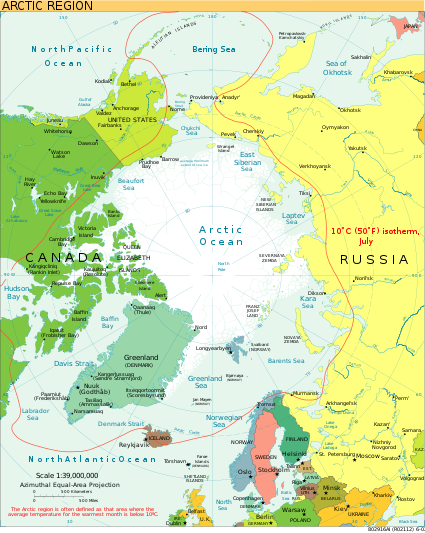The climate of the Arctic is characterized broadly by long, cold winters and short, cool summers. There is a large amount of variability in climate across the Arctic, but all regions experience extremes of solar radiation in both summer and winter. Some parts of the Arctic are covered by ice (sea ice, glacial ice, or snow) year-round, and nearly all parts of the Arctic experience long periods with some form of ice on the surface. Average January temperatures range from about −40 to 0 °C (−40 to +32 °F), and winter temperatures can drop below −50 °C (−58 °F) over large parts of the Arctic. Average July temperatures range from about −10 to +10 °C (14 to 50 °F), with some land areas occasionally exceeding 30 °C (86 °F) in summer.
The Arctic consists of ocean that is nearly surrounded by land. As such, the climate of much of the Arctic is moderated by the ocean water, which can never have a temperature below −2 °C (28 °F). In winter, this relatively warm water, even though covered by the polar ice pack, keeps the North Pole from being the coldest place in the Northern Hemisphere, and it is also part of the reason thatAntarctica is so much colder than the Arctic. In summer, the presence of the near-by water keeps coastal areas from warming as much as they might otherwise, just as it does in temperate regions with maritime climates.
Contents[hide] |
So much more... please click this link to enjoy reading the entire posting:


No comments:
Post a Comment